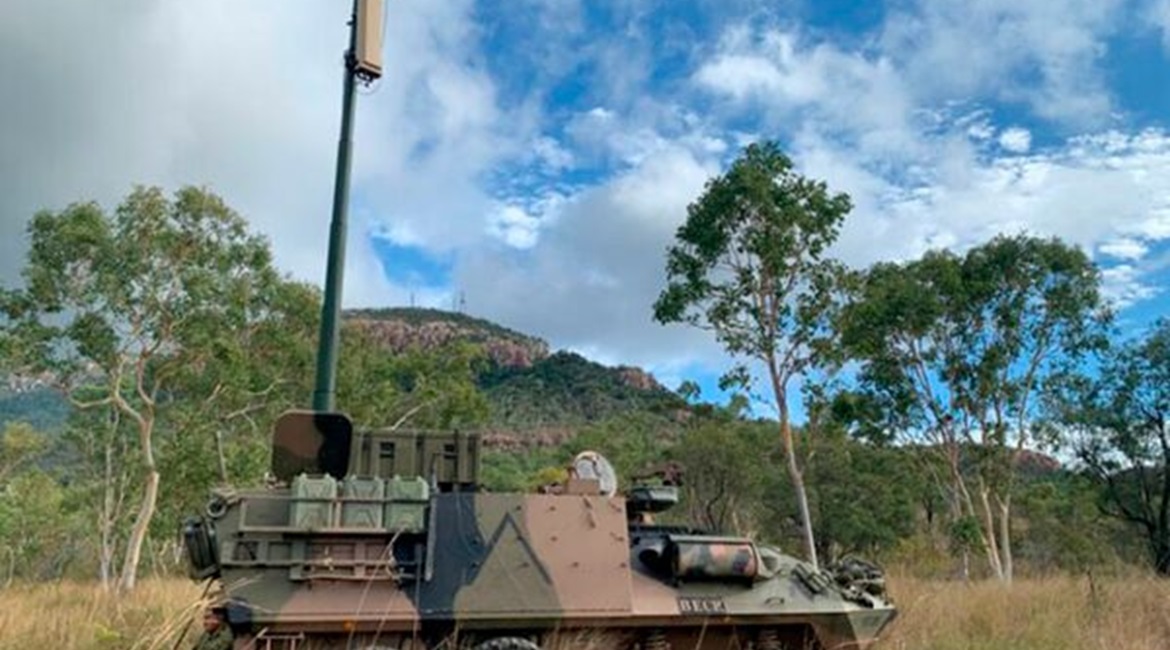
Australian counter-unmanned aircraft system (C-UAS) specialist DroneShield has sold several of its RfOne MKII long-range direction-finding sensors to the Australian Army, part of a growing interest in the mobile applications of the technology in different domains.
The deal was announced on 19 July and will “allow the Australian Army to assess its future counter-[UAS] requirements and options”, DroneShield said in a statement, as well as equipping existing platforms with the sensors.

DroneShield's RfOne MKII RF direction-finding sensor seen mounted on an Australian Army ASLAV armoured fighting vehicle. The company has seen increasing interest from military forces in its C-UAS technologies. (DroneShield)
RfOne MkII is an radio-frequency (RF) detection product and could be used in several applications, said DroneShield CEO Oleg Vornik.
These sensors have been deployed on Australian Light Armoured Vehicles (ASLAVs) “to trial them in a real operational environment against a range of robotic threats”, Vornik told Janes . He added that the acquisition also comes with the company's DroneSentry command-and-control (C2) system.
DroneShield has seen an increasing interest in mobile applications, Vornik said. In asymmetric warfare, a high-value target like an armoured vehicle can be vulnerable to a low-value system like an unmanned aerial vehicle (UAV), which could be used for reconnaissance or directing fires to the high-value platform. This means military forces “need to have airspace awareness against [UASs] and other robotic targets”, Vornik said.
DroneShield, which is based in Australia, has previously sold several other systems to the country's armed forces, such as its DroneGun portable UAV defeat device and its RfPatrol body-worn UAS protection device.
Looking to read the full article?
Gain unlimited access to Janes news and more...




